Monday, March 16th, 2020

A recent study compiled a statistical summary of negative working conditions in the office and complaints of dry air was a close second only behind noise. The “open space” office is becoming more prevalent in order to reduce office space costs, maximize creativity, and improve interoffice communication. However, this also has a negative impact as it puts employees in closer proximity of each other making them more susceptible to sub-optimum climate conditions.
Tuesday, November 26th, 2019

Winter has arrived early… Time for fun in the snow, cocoa by the fireplace, and shuffling your feet across the carpet so you can give someone an unexpected shock! We’ve all experienced the joy and pain from this, but do you know why this shock only seems to happen during the winter? You may have heard it’s from low relative humidity but may not fully understand how and why this happens. Let us fill in the blanks.
Wednesday, May 29th, 2019

The energy saving potential of atomizing humidifiers with its small horsepower pump unit is well documented but the additional free cooling that occurs during evaporation is often overlooked.
The amount of heat that one pound of water will absorb when changing states from a liquid to a vapor is called its latent heat. This is about 970 BTU/LB at atmospheric pressure with an initial water temperature of 212 deg F. To raise the temperature of water 1 deg F, it takes 1 BTU/LB, known as its specific heat. For example, if you have room temperature water at 70F, it will take 142 BTU’s (212F-70F) plus 970 BTU’s for a total of 1,112 BTU’s to fully evaporate one pound of water by atomizing with a fog system. As you can see, most of the energy is used to change states from a liquid to a vapor and the initial water temperature has minimal effect on the overall cooling.
Tuesday, April 30th, 2019

Set to open in 2020, the massive 530,000 square foot facility will house approximately two-thirds of Harvard’s John A. Paulson School of Engineering and Applied Sciences (SEAS) and will be among the most cutting-edge facilities of its kind in the world.
Thursday, September 6th, 2018
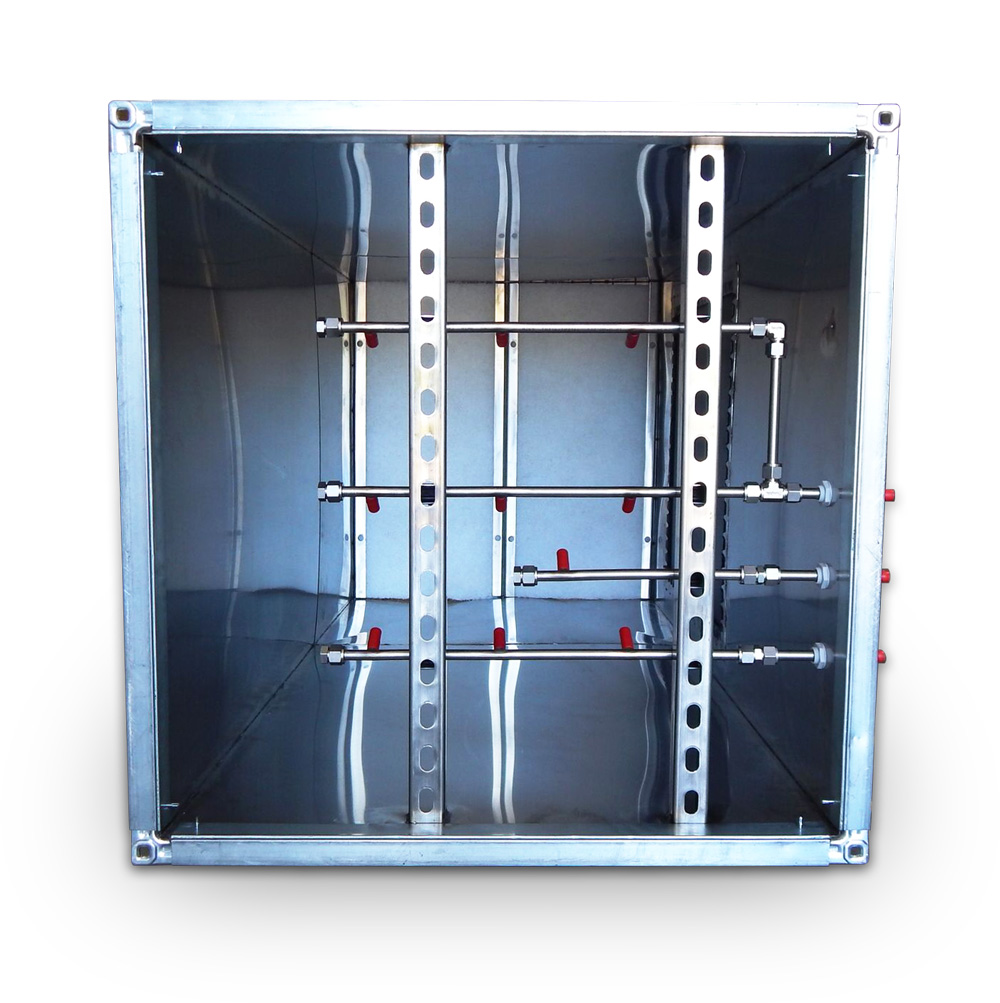
Installing an atomizing humidifier inside of an air handling unit (AHU) can be difficult if there’s not enough room inside the unit for optimal evaporative distance (the distance the atomized water droplets travel from the nozzles to the mist eliminators). Normally, an atomizing humidifier section would require 3-6’ of evaporative distance. So, what do you do if the space just isn’t available?
It’s not as difficult as you might think. You just install the nozzle manifolds and mist eliminators into a modified section of ductwork instead.
Tuesday, November 28th, 2017
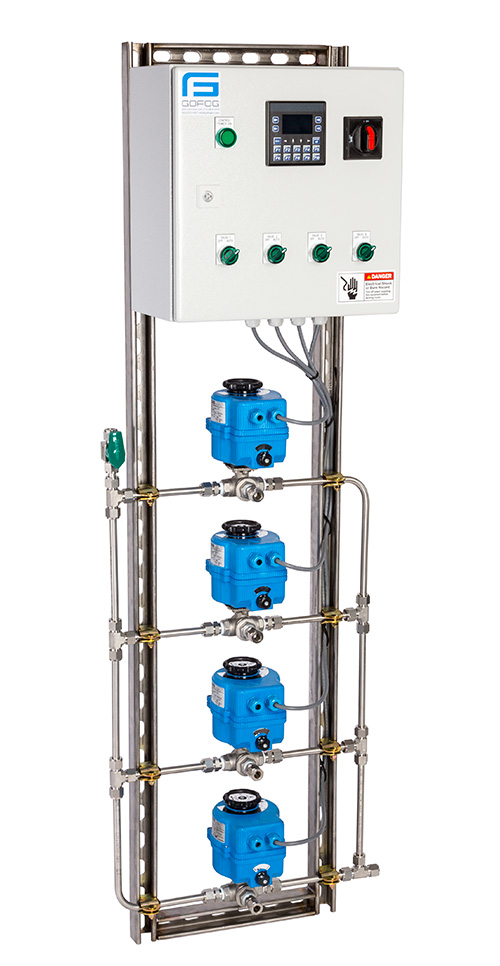
GoFog Staging Racks make humidifying inside an AHU easy to control and even easier to install.
The atomizing nozzles installed inside each AHU have an external control panel, with PLC and staging valves, that will modulate the humidifier output based on a BMS demand signal (0-10V or 4-20mA).
The valve rack shown here uses (4) motorized ball valves (3-way) that provide (15) stages of capacity control by sequencing the valves. Attached to each of the valve’s discharge ports are manifolds inside the AHU with varying amounts of nozzles. Once the valve panel receives a BMS demand signal that is high enough to open the first stage, it sends out a pump request to the fog pump station. This provides 1,000 psi of reverse osmosis water to the nozzles.
Tuesday, August 22nd, 2017
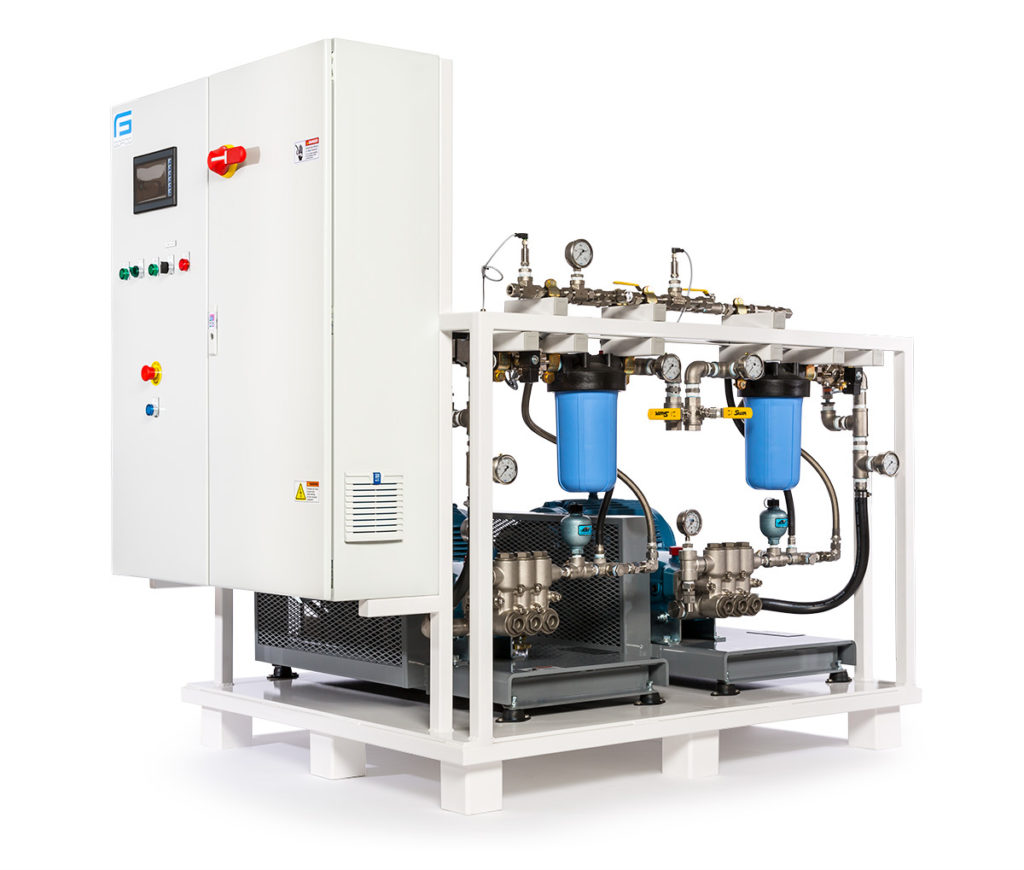
Last month we showed you how to humidify small applications without busting the budget by using our Pico Pump Rack. Here we explain how to properly select a fog pump system for large applications that require thousands of pounds of water per hour.
Monday, July 17th, 2017
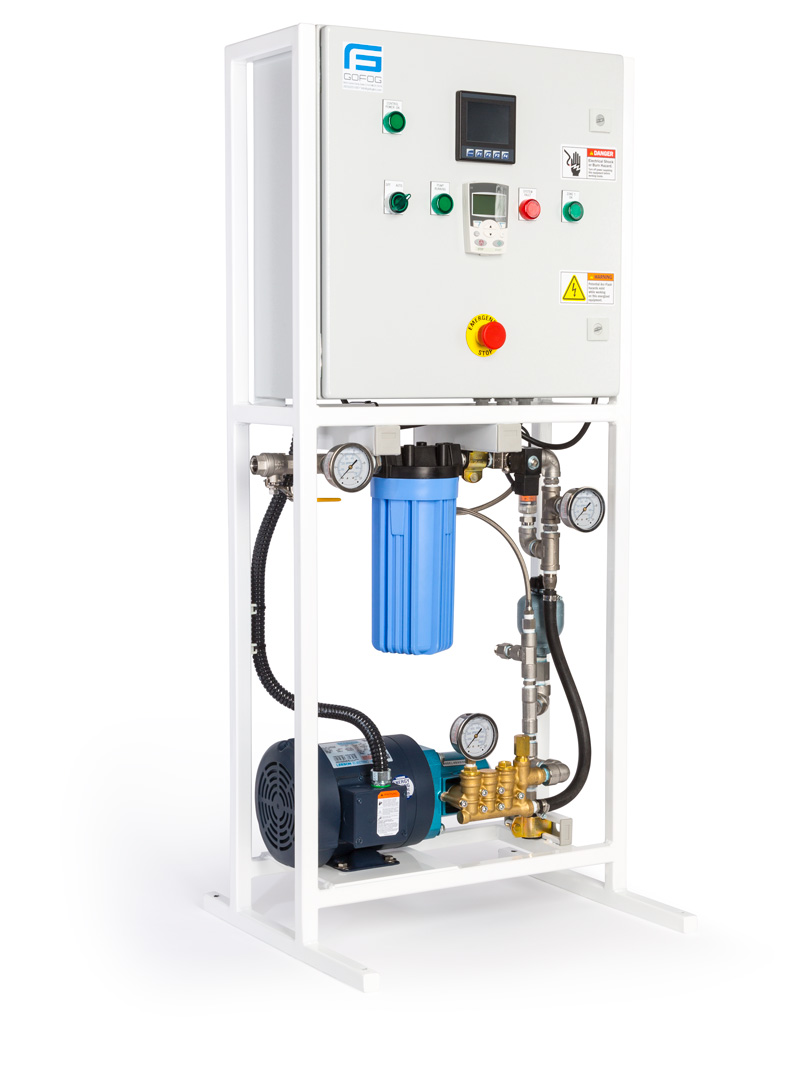
As a custom humidifier manufacturer, we understand that humidity loads vary greatly from job to job. For example, some projects may require over 5,000 lbs/hr whereas a small print shop or clean room may only need 100 lbs/hr or less.
These smaller projects can be difficult because the humidity load is too low to justify the cost for a commercial humidifier and too high for a residential humidifier. The Pico Pump Rack bridges this gap without sacrificing quality. All units come with the normal bells and whistles you’ve come to expect (PLC, VFD, CAT Pump), but at a fraction of the size and cost.
Monday, April 24th, 2017
Part 2: Evaporative Cooling Effect
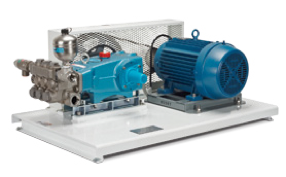 In the second part of this series we explain the positive and negative impacts of evaporative cooling and why it should never be overlooked.
In the second part of this series we explain the positive and negative impacts of evaporative cooling and why it should never be overlooked.
When designing a fog system for a hot dry climate, the evaporative cooling effect is never ignored because it’s an integral part of the design. However, for areas that are typically humid in the summer but need to add humidity during the dry winter months, it can sometimes be an afterthought. If unaccounted for, you may find yourself fighting for control of the HVAC system.
Wednesday, April 19th, 2017
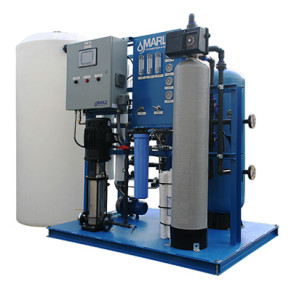 In a nutshell, a Fog System (Atomizing Humidifier) is just high pressure RO water that is atomized through misting nozzles. Seems easy enough, right? While it’s true that these systems are relatively simple, an improper design can have major consequences. In this series, we share with you the most common design mistakes and how to avoid them.
In a nutshell, a Fog System (Atomizing Humidifier) is just high pressure RO water that is atomized through misting nozzles. Seems easy enough, right? While it’s true that these systems are relatively simple, an improper design can have major consequences. In this series, we share with you the most common design mistakes and how to avoid them.